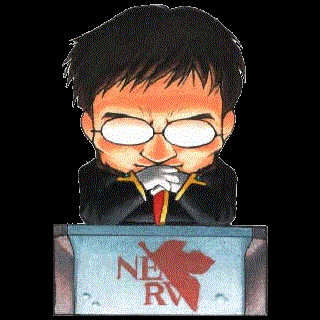Fun fact: part of the reason your printer needs all toners is because it prints an identification pattern unique to the printer on every document (which uses those colors).
I hate modern printers.
Don’t worry, they hate you too!
Its not even a “modern” printer thing. They’ve done this since the 80s.
But now with modern printers they can have email addresses and locations.
Specifically, it mostly uses yellow in very faint dots imperceptible to the eye. I actually don’t know if it needs every color, or if it’s just yellow, or if it varies by printer.
Scanners and printers will also detect a pattern of dots which indicates “this is money,” embedded in various clever ways in the design of the art of the money of most countries, and refuse to have anything to do with the images.
You don’t own your devices anymore. And it will, steadily, get worse.
Pffft, this is some conspiracy bs, there’s no way…
googles it
Oh shit… OH FUCK
Though, to be clear, it seems like there are already tools available that you can use to print a bunch of tracking dots all over the page, essentially ‘hiding’ the real tracking dots and making them unusable, so it’s not impossible to get around. Still absolutely wild, and thanks very much for mentioning this, I learned something today.
Inb4 downloading that tool becomes a felony
https://en.wikipedia.org/wiki/EURion_constellation
I used to have a t-shirt with that pattern.
I knew about tracking dots and anti-copy features of currency, but I had no idea it was such a secretive thing. This is wild stuff.
According to Wired.com, the banknote detection code in these applications, called the Counterfeit Deterrence System (CDS), was designed by the Central Bank Counterfeit Deterrence Group and supplied to companies such as Adobe as a binary module.[
That’s so fucked man, imagine integrating some random binary module supplied by the world bank into your app and then keeping it completely secret. That’s surely not the only opaque binary that these companies just load in, god only know how many backdoors and other malicious shits have been stuffed into major retail software.
Tracking dots, right?
Do anyone know a printer that doesn’t do that?
I’m pretty sure you just earned an entry on some surveillance list lol
I’m already on a couple ones so all good 😊
Black ink only printers can’t print in yellow.
Unfortunately there are techniques that work with black and white printers too. I don’t know if any have actually been implemented though.
I hadn’t heard that. I guess imperceptible grey is just as good.
I can’t find it now but IIRC it works differently - not by adding dots but by subtly modulation the laser power. It’s more like traditional steganography.
Dot matrix printers don’t do it.
That doesn’t require tracking when you’re the only guy who still uses a dot matrix printer.
I’m honestly kind of surprised there isn’t an even more relevant xkcd comic.
So my black and white printer is untraceable!
Pretty sure B&W toner is in fact untraceable. Anyone know different?
those use yellow ink afaik.
the yellow went down when printing b/w only (which we usually did) on our old officejet pro that had separate tanks for each color.
Fun fact: your electronic devices that render graphics are completely capable and in my opinion almost certainly do this as well. We use a business version of it at our enterprise and while it is additional software layered over windows, it’s completely imperceptible to the naked eye and I doubt such technology wouldn’t be immediately rolled out as quickly as possible by pretty much everyone at a “top secret” level.
In what world do you live in where there aren’t a billion nerds carefully analyzing screen recordings of tubers and streamers?
It occurred to me randomly that you, a random internet stranger who I owe nothing to, might get a better understanding of the technology from the publishers site.
In what world do you live in where sufficiently advanced encryption is distinguishable from random noise? Not to mention the layers of transport, compression, encryption, and etc that adds applications of ‘fuzziness’ to the equation. All of this makes finding the id next to impossible vs randomly added data, and that is assuming you had a pure source to compare it to. For my part I can verify you need specific advanced software tools to detect the changes the software we run in production makes and even then it requires a decryption key to decode the identifier id and algorithmic delivery (where the changes are made). This would all just look like compression loss or noise under observation without insider knowledge.
What good would such a fingerprint be if it didn’t survive normal recording conditions?
You’re making an untrue assumption based on a misunderstanding of what I’ve said. I did not say it doesn’t survive. I said you cannot distinguish it from random noise without knowing it’s there and how to see it, because there is already a massive amount of noise/“fuzzing” in the processing pipeline. In addition partial ids are often enough. Very little of anything processed and interpreted by humans is specifically binary, and short of implementing an insane level of hashing in the bare hardware and verifying all those hashes up the chain, it’ll always be that way.
That is NOT the reason. FFS. If that was the case, you couldn’t switch to B&W only printing when you’re out of one of the cartridges, and, shocker!, you almost always can (assuming that you don’t have the absolutely worst printer driver in existence).
I work in commercial printing, and I print in CMYK every single day. Almost nothing is absolutely pure cyan, magenta, yellow, or black. Printing pure black ends up looking like a very washed out charcoal grey. If you want ‘rich black’–which is what most people think of as black, you need to us C,M, and Y. If you had a spectrophotometer and were creating color profiles for your printer, you’d be able to very, very quickly see that. (You’d also be able to see that the colors used in most inks and toners isn’t strictly linear, and that you can start getting weird ‘hooking’ in colors once you exceed a certain ink volume. Some inks are much worse than others in that respect.) Depending on the RIP software that you’re using, and how you create the color profile for the printer, you can specify exactly where greys switch from being monochromatic (K only) to using the full gamut.
It used to be really apparent with our old Roland printers, where you could easily see the individual pixels with a magnifying glass. Now we’re using printers that are higher resolution–I think 600ppi natively, but I see enough dot gain in what we’re printing on that anything past 150ppi is irrelevant–you can’t see them.
There’s a collection of images that I have to print regularly from one of our corporate clients. This collection of images is always sent as greyscale .tif files. When you look at them on-screen, they look fine. When you print them, they’re washed out. The issue is that the RIP software sees the images in greyscale, and defaults to using K only. If I convert the images to RGB (which, yes, I know, it’s weird that I print in RGB when the printer is CMYK, but trust me, it improves color slightly), then the printed image looks like the image on screen.
It may not be true for commercial printing, but it is absolutely true for all consumer printers made since the mid 1990s.
Some can produce B&W identification marks, but every consumer printers stamps every single page printed with identification marks with at minimum the printer model and serial number.
Right, but that’s not the reason it won’t print if you’re out of a color. Especially since you can still print in B&W only mode. Or you certainly used to be able to, but I’m still using the same color laser from >10 years ago for home use, and an old Brother photo printer for things that need to be higher resolution.
If you use a Brother printer with ecotank cartridges, you can get an empty yellow cartridge and fill it with water if you’re worried about tracking dots. You’ll want to run a few cleaning cycles first to ensure that all the residual yellow is gone from the yellow print head.
…Or you can buy a typewriter at a pawn shop with cash, and dump it once you’ve written the ransom note/bomb threat. If you’re counterfeiting stuff, you should probably consider the printer to be a consumable item that gets discarded and replaced after every batch.
Also, not every printer made since the mid-90s does that. See here
And you’re going to need cyan if you want us to photograph your house.
Here’s the original (higher res / higher quality): https://www.skeletonclaw.com/image/628060891450064896
Nice, thanks!
i think life would be more fun if painters refused to paint things ugly and dull colors
Sometimes is just want a copy of a blank page. No, not a blank page, a COPY of a blank page.
I’ll fax you one.
A facsimile of a copy of a blank page? INTERESTING.
Your fax will include b/w prints of the dust and other edge artifacts of the machine no doubt from the light
You think this is a game!? My fax machine has been detail cleaned, with a custom air-tight gasket sealing the scanner bed. It is situated in a pressurized clean-room with a HEPA filter, behind 2 security doors and monitored by closed-circuit cameras. I’m not an amateur faxer…
this guy faxes.












